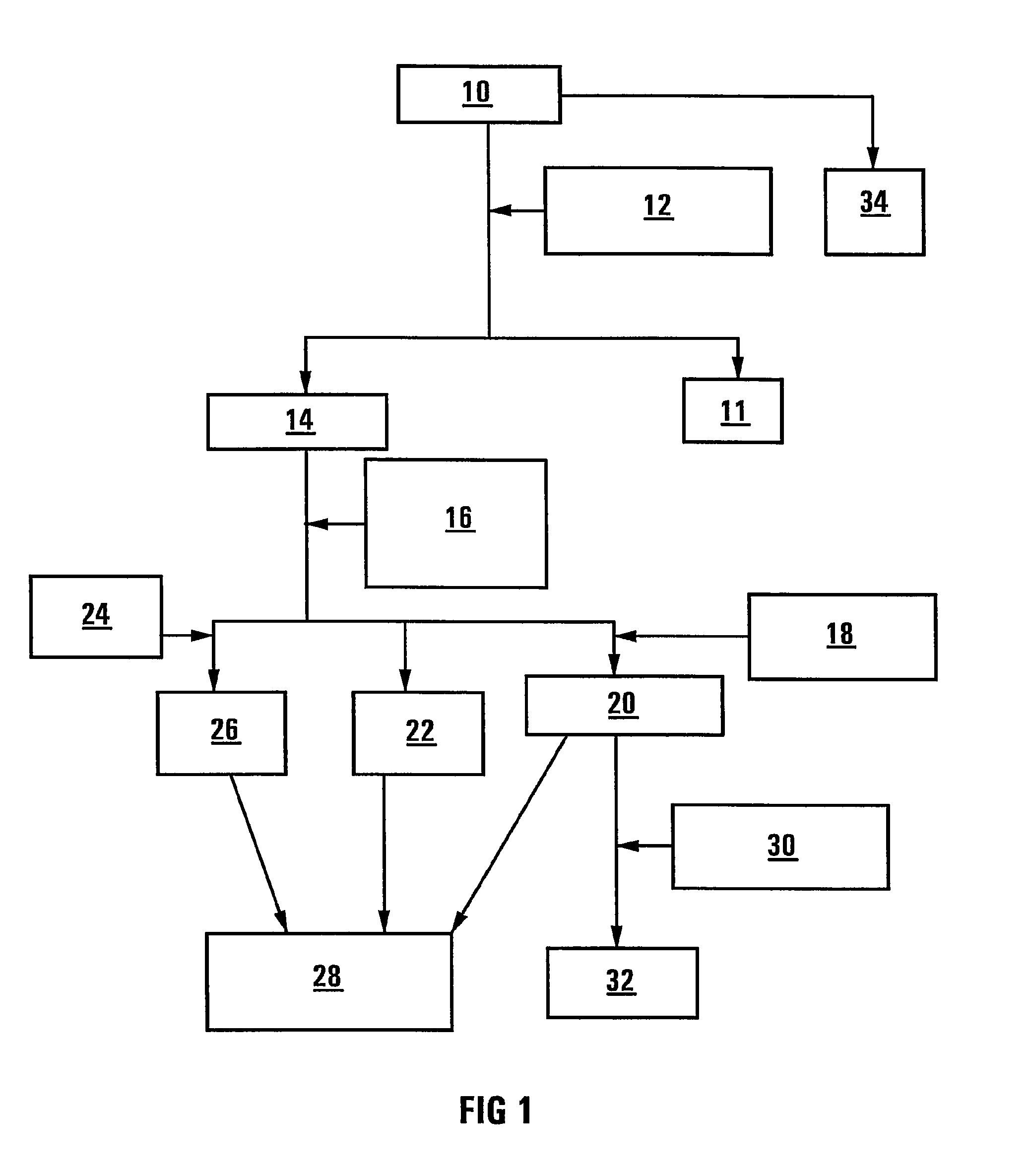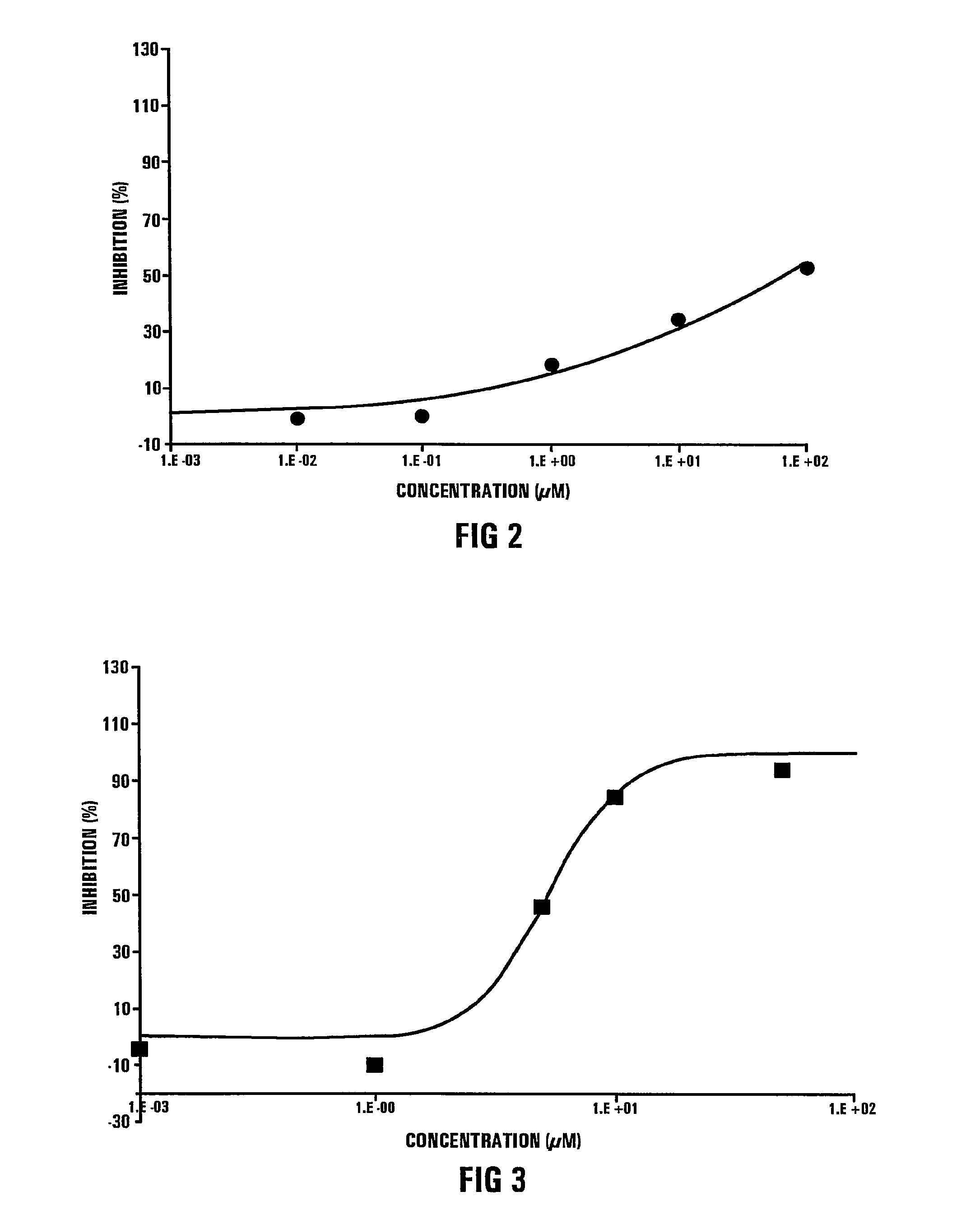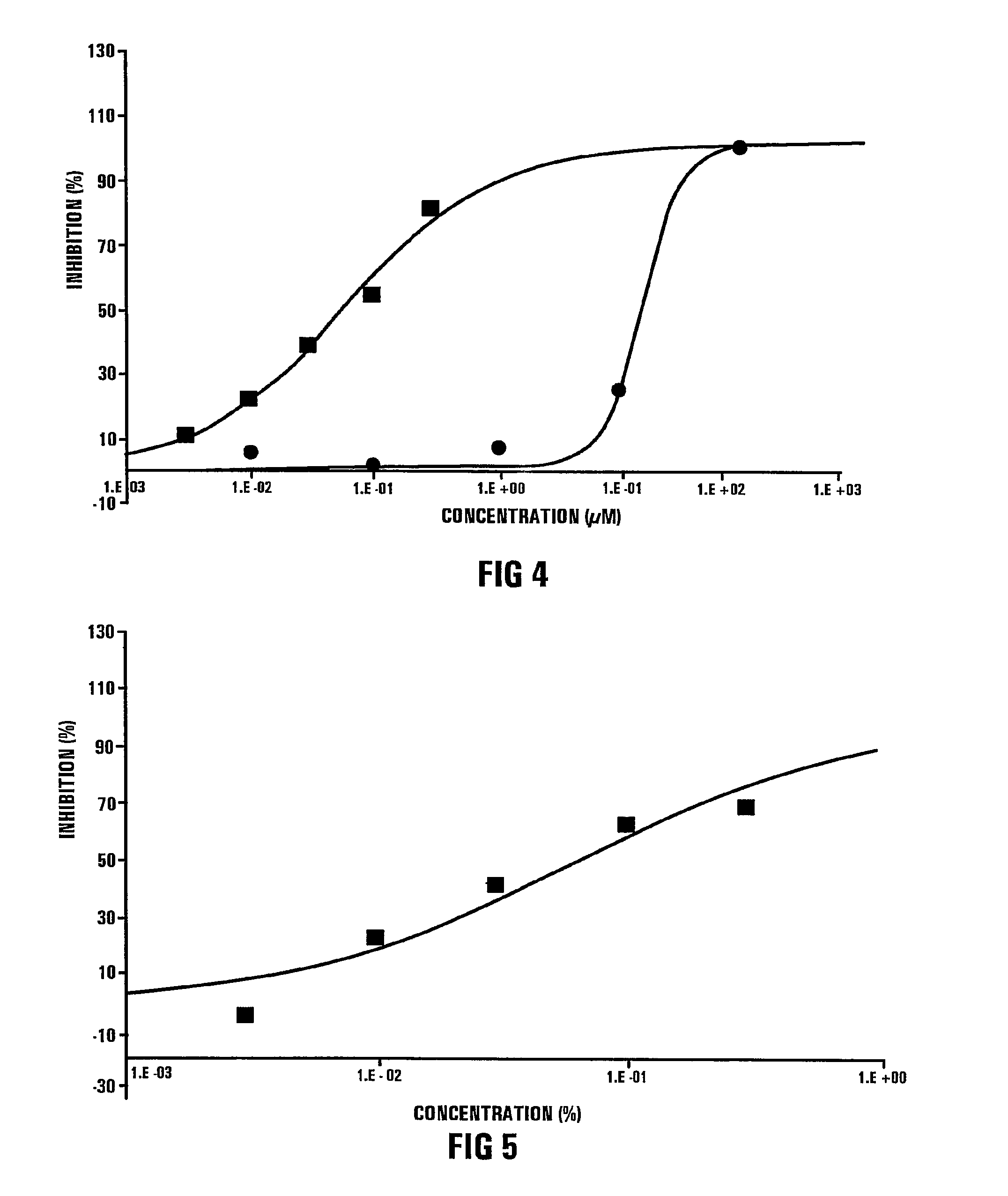Preventative treatment and remission of allergic diseases
a technology for allergic diseases and preventative treatment, applied in the field of compounds useful in the prevention treatment and remission of allergic diseases, can solve the problem of no curative treatment for any chronic inflammatory diseas
- Summary
- Abstract
- Description
- Claims
- Application Information
AI Technical Summary
Benefits of technology
Problems solved by technology
Method used
Image
Examples
example 1
Aqueous Infusion and Fractionation of Plant Material
[0065]As shown in FIG. 1, an infusion 14 is prepared from plant material such as leaves, rhizomes or roots. One litre of deionised boiling water, shown at 12, is added to 22.08 g of oven dried (60° C.) ground rhizomes, shown at 10, and left to stand for 1 hour with occasional stirring. The water is filtered and solids 11 are removed and the aqueous phase is extracted four times with 500 ml of diethyl ether, as shown at 16. The extracts obtained from each extraction are combined, dried, filtered and the solvent removed by means of a rotary evaporator in a water bath at a temperature of 25° C., as shown at 18, to produce an ether portion 20 (WG13A) weighing 119 mg, which is designated the organic fraction. An intermediate layer in the form of a solid 22 (WG13D) forms during the liquid-liquid partitioning. Approximately 107 mg of solid 22 is obtained, which is kept separate. The aqueous layer is freeze-dried, as shown at 24, to yield ...
example 2
Organic Extraction of Plant Material
[0066]Instead of following the method of Example 1, and again with reference to FIG. 1, one litre of diethyl ether is added to 22.08 g of oven dried (60° C.) ground rhizomes and left to stand for 1 hour with occasional stirring. The ether is filtered and carefully evaporated under low vacuum to yield a dry extract 34 (WG-I-101 or WG-I-58A) of approximately 1.5 g. The compound of formula 1 is identified in the organic extract by using thin layer chromatography.
example 3
Fractionation of Organic Extract
[0067]The diethyl ether extracts produced by either the aqueous extraction or the organic extraction procedures described above was purified further by flash chromatography (silica gel), as shown at 30, using ethyl acetate-hexane (1:9, v / v) as eluent to yield the sesquiterpenoid of formula 1 WG13C or WG-I-94B, as shown at 32.
[0068]An essential oil is obtained by steam distillation of the rhizomes and / or roots of the plant species Siphonochilus aethiopicus. The chemical compositions of the major components of the essential oil are shown in Table 1 below. Identification of the major components is accomplished by using combined gas chromatography-mass spectrometry and the Kovats Indices technique. The sesquiterpenoid of formula 1 crystallizes at the interface of the essential oil and the condensate obtained during the steam distillation process. Upon subsequent cooling of the essential oil to below 4° C., the compound of formula 1 crystallizes from the o...
PUM
| Property | Measurement | Unit |
|---|---|---|
| temperature | aaaaa | aaaaa |
| thickness | aaaaa | aaaaa |
| concentration | aaaaa | aaaaa |
Abstract
Description
Claims
Application Information
 Login to View More
Login to View More - R&D
- Intellectual Property
- Life Sciences
- Materials
- Tech Scout
- Unparalleled Data Quality
- Higher Quality Content
- 60% Fewer Hallucinations
Browse by: Latest US Patents, China's latest patents, Technical Efficacy Thesaurus, Application Domain, Technology Topic, Popular Technical Reports.
© 2025 PatSnap. All rights reserved.Legal|Privacy policy|Modern Slavery Act Transparency Statement|Sitemap|About US| Contact US: help@patsnap.com



